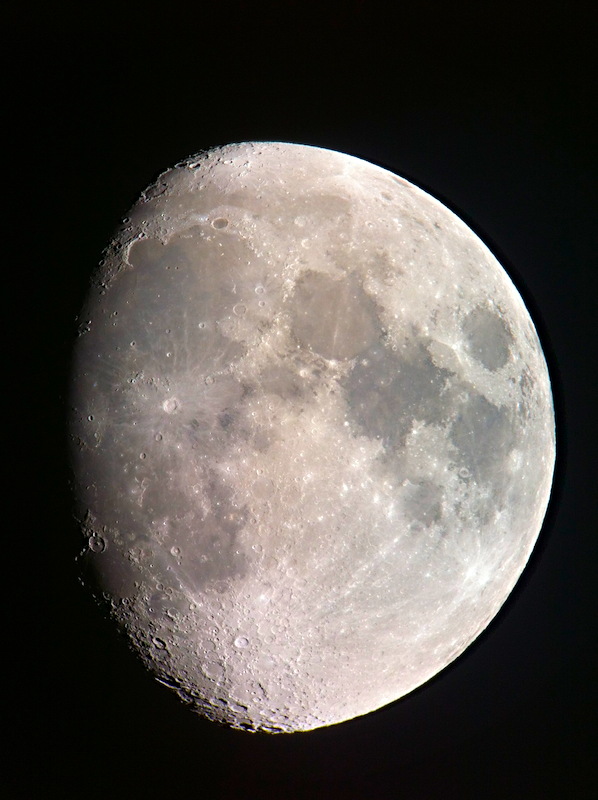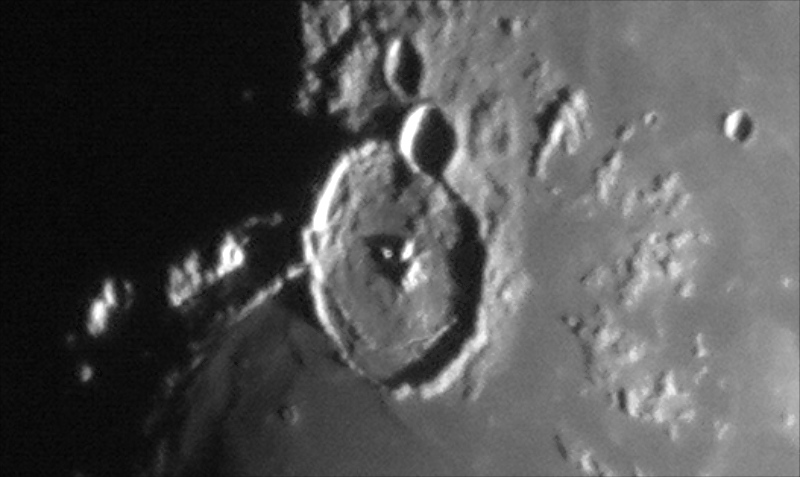
iPhone: Moon Crater Gassendi, Mountain Shadows
Posted: 23 January 2013
The observatory was opened Tuesday, 22 January 2013, at 1805 MST, 70°F. The sky was mostly clear with some clouds low in the western sky. At 1810 MST, viewed Jupiter, 77X. The four Galilean Moons were visible. The Great Red Spot had nearly rotated out of view on the limb. Switched to the 2" 9mm 100° eyepiece (222X) and slewed to the moon. Seeing was not very good. I did some touring around the lunar surface and decided to do a high magnification image of crater Gassendi in the hope of improving on an image taken a year ago.
Set up for iPhone 4 imaging using the MX-1 afocal adapter on the 8" LX200-ACF. This was taken at 77X:

Crater Gassendi, 222X, cropped from original full-frame image:

Some mountain shadows intrigued me, so I imaged them, 222X, (cropped to the same scale):

Ended imaging at 1847 MST. Began monitoring the same mountain shadows using 222X with the 2" 100° eyepiece. It is always fun to watch the changing perspectives and shapes as the sun rises on various locations on the moon. Ended monitoring at 1944 MST. The shadow shapes did not change much during the nearly one hour that I monitored them; the lengths of the shadows just shortened (as expected).
At 1945 MST, took a quick look at the moon, 77X.
The observatory was closed at 1957 MST, 59°F. As I was leaving the observatory I could see the Zodiacal Light and the Milky Way in the western sky even though the bright waxing gibbous moon was high in the sky.
In case you missed it, I updated yesterday's report on the Moon-Jupiter Conjunction to have a larger resolution version of the last photo. Click the last image in the photo to see the larger version showing Jupiter's cloud bands.
Comments are welcome; use the Comments section below, or you can Email Me. Thanks.
Go to the previous report.
Return to the Cassiopeia Observatory Home Page.